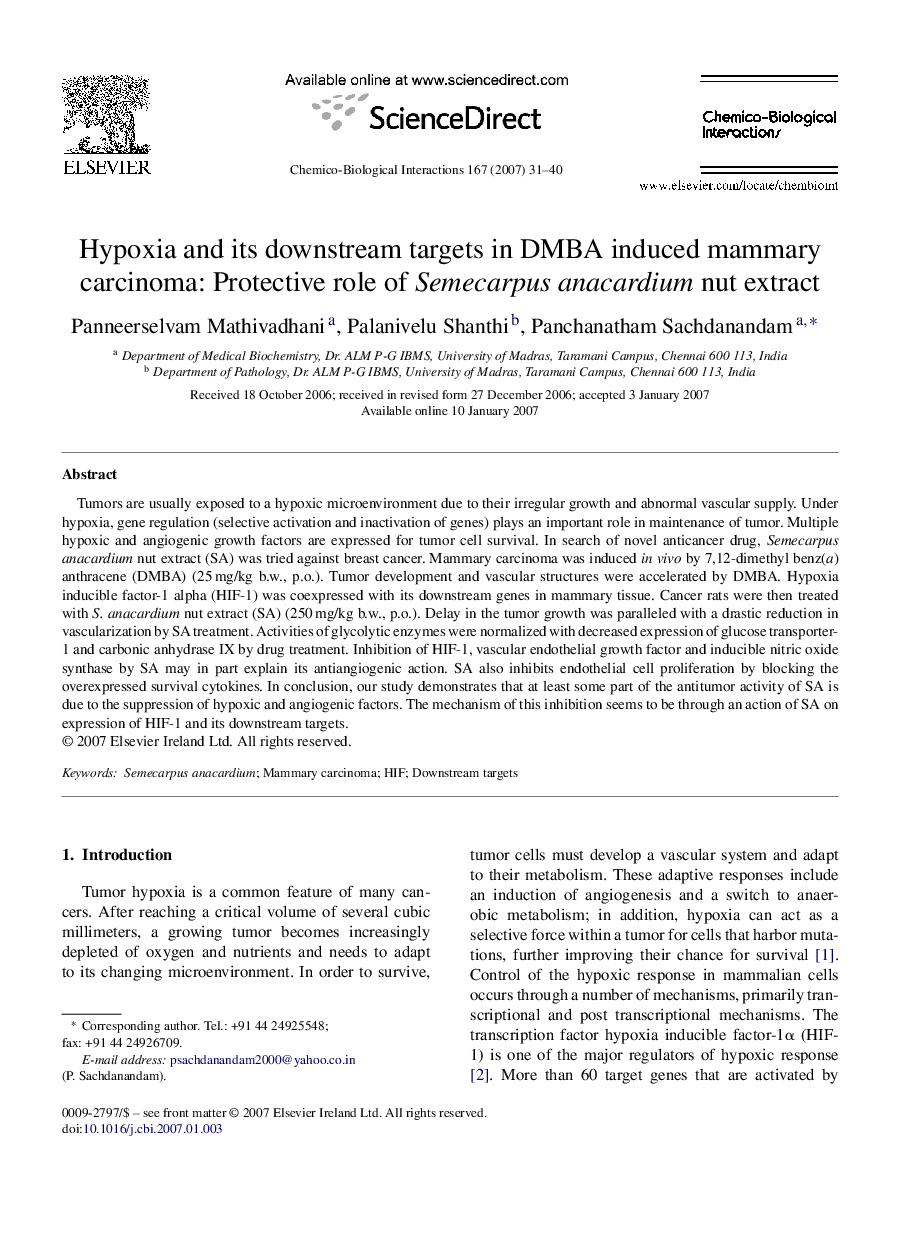| Article ID | Journal | Published Year | Pages | File Type |
|---|---|---|---|---|
| 2582637 | Chemico-Biological Interactions | 2007 | 10 Pages |
Abstract
Tumors are usually exposed to a hypoxic microenvironment due to their irregular growth and abnormal vascular supply. Under hypoxia, gene regulation (selective activation and inactivation of genes) plays an important role in maintenance of tumor. Multiple hypoxic and angiogenic growth factors are expressed for tumor cell survival. In search of novel anticancer drug, Semecarpus anacardium nut extract (SA) was tried against breast cancer. Mammary carcinoma was induced in vivo by 7,12-dimethyl benz(a) anthracene (DMBA) (25Â mg/kg b.w., p.o.). Tumor development and vascular structures were accelerated by DMBA. Hypoxia inducible factor-1 alpha (HIF-1) was coexpressed with its downstream genes in mammary tissue. Cancer rats were then treated with S. anacardium nut extract (SA) (250Â mg/kg b.w., p.o.). Delay in the tumor growth was paralleled with a drastic reduction in vascularization by SA treatment. Activities of glycolytic enzymes were normalized with decreased expression of glucose transporter-1 and carbonic anhydrase IX by drug treatment. Inhibition of HIF-1, vascular endothelial growth factor and inducible nitric oxide synthase by SA may in part explain its antiangiogenic action. SA also inhibits endothelial cell proliferation by blocking the overexpressed survival cytokines. In conclusion, our study demonstrates that at least some part of the antitumor activity of SA is due to the suppression of hypoxic and angiogenic factors. The mechanism of this inhibition seems to be through an action of SA on expression of HIF-1 and its downstream targets.
Related Topics
Life Sciences
Environmental Science
Health, Toxicology and Mutagenesis
Authors
Panneerselvam Mathivadhani, Palanivelu Shanthi, Panchanatham Sachdanandam,
